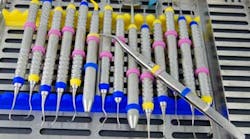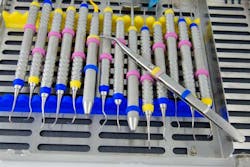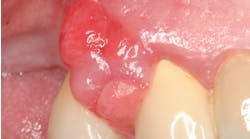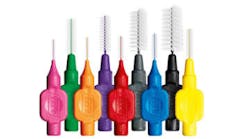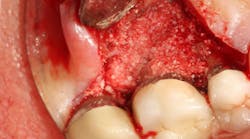Call to the dental profession: Saving the art of scaling and root planing in periodontal treatment
As a periodontist in the midst of his 41st year of practice, I have enormously benefitted from being mentored by dental practitioners with superb scaling skills, as well as those who have mastered the art of surgical pocket elimination. These skills are required to effectively treat patients with periodontal disease. The treatment and prevention of periodontal disease took flight with ground-breaking practitioners early in the 20th century. These pioneers who mastered the art of scaling and root planing brought, for the first time, effective treatment to a population suffering from periodontal disease. One such individual, Dr. Isadore Hirschfeld, whose 1939 text, The Use and Abuse of the Toothbrush, remains relevant today, almost 80 years later.
Dr. Leonard Hirschfeld and Dr. Bernard Wasserman published a study in which they longitudinally followed 600 patients treated nonsurgically from 22 to 50 years; definitive scaling and root planing was the sole modality of treatment. The study is a landmark in the field of periodontology. It clearly reaffirms the long-term value of careful, repeated scaling and root planing for the maintenance of periodontal patients. Dr. Wasserman's classic text, Root Scaling and Planing: A Fundamental Therapy, unfortunately is gathering dust and remains unread by most of the current generation of periodontists, dentists, and dental hygienists.
ADDITIONAL READING |A guideline for clinical practice: The search for a successful adjunctive periodontal therapy
I'm including a very appropriate quote from the textbook Clinical Periodontology, authored by Drs. Michael Newman, Henry Takei, Perry Klokkevold, and Fermin Carranza:
Scientific Transfer
Scaling and root planing is the foundation of periodontal treatment. The thorough removal of subgingival plaque and calculus is essential for successful periodontal therapy. Because the removal of subgingival calculus is such a demanding clinical skill which takes years of experience and the desire for perfection in order for clinicians to become highly competent, clinicians should educate patients so they appreciate the time and high level of skill necessary for successful root planing. In most cases, local anesthesia is needed so that patients are comfortable and the clinician can focus on obtaining a smooth, glass-like surface which is free of calculus. The presence of residual calculus after treatment will compromise the ability to obtain healthy gingiva and pocket depth reduction. The persistence of bleeding upon probing after treatment can be the result of a roughness associated with incomplete removal of subgingival calculus and a persistent, unhealthy biofilm on the root surface.
Introduction of the dental endoscope or perioscope has enabled us to see calculus via a fiber-optic lens with a powerful light at the end of a narrow probe. The image of the subgingival area is visualized on a computer screen with a magnification of 50X. We use this as we scale, and it has demonstrated several important observations. The perioscope has revealed that even while visualizing the calculus, it is sometimes difficult to remove even with ultrasonics. We often have to revert to scaling the calculus that's embedded in the root surface in order to remove it. In addition, areas that we have maintained over the years that suddenly broke down or have been nonresponsive during maintenance have almost always had subgingival calculus visualized with the perioscope. When the calculus is removed, the pocket decreases in depth and the signs of pathology cease. The results are dramatic when you get the last piece and the most important piece of calculus removed. This is especially true on single-rooted teeth.
Nationally, the number of patients being referred to periodontists for periodontal evaluations and treatment has dropped significantly. We have not cured periodontal disease, but as a result of soft-tissue management within general practices, it has gone underground; and now when patients do appear in our offices, it is often to treat advanced periodontal disease requiring extractions, bone grafts, and implants. Following extraction of teeth that have been maintained for many years, calculus is often noted, sometimes to the apex. Patients are perplexed about how this could possibly occur when they have been seeing their dentist and having frequent maintenance by the hygienist.
ADDITIONAL READING |Understanding and managing peri-implant bone loss
Studies have shown that periodontal disease is not linear, but episodic; leaving calculus in the presence of good oral hygiene or just removing the biofilm will often mask soft-tissue markers sometimes for years. Pockets without bleeding and pink gingiva are not necessarily free of active disease. And suddenly the patient regresses, develops an abscess, or a mobile tooth; everybody is surprised; unfortunately, the disease process has gone undetected for a long period of time.
Removing calculus is one of the most difficult procedures in dentistry. It is done blindly by tactile sense in areas of the mouth that pose a significant challenge. It requires fulcrums, sharp curettes, a great deal of time (often an hour to treat four to six teeth in a quadrant), and an experienced clinician who has had adequate mentoring in this challenging procedure.
Root planing has unfortunately lost its importance in the eyes of many clinicians. Root planing was used by periodontists and those seriously involved in scaling and root planing as a modality, not as an effort to just create a smooth root. The root planing is essentially to ensure that the calculus is completely removed, because it often gets smoothed over in the process of scaling. By root planing the roots, you increase the likelihood that the root is free of calculus. It is not an end in itself, but a means to an end.
It takes years of reinstruction, monitoring, and mentoring to learn the much-needed art of scaling and root debridement. I routinely call my hygienists into the operatory to point out the areas where they scaled teeth and calculus still remains. It gives them an opportunity to observe the outcome of their efforts as well as sit down and remove calculus via root planing the roots with direct access. After years of mentoring and practice, some of these dental hygienists have become exceedingly capable of removing calculus predictably. The most difficult hygienists to mentor were those who had been in practice for a number of years and were not willing to learn.
Let me discuss how we got to this point where scaling and root planing have essentially been abandoned:
- Graduate schools: Some graduate schools have morphed into surgical treatment centers where procedures such as sinus lifts, implants, periodontal surgery, bone grafts, and soft-tissue grafts to cover roots have supplanted the emphasis on scaling, root planing, and maintenance. Ultimately, no matter how a patient is treated periodontally, that patient has had a chronic disease that will reoccur in the absence of frequent, effective scaling, monitoring, and constantly instructing patients in the art of effective plaque control. There is no cure for periodontal disease. You are only as effective as the last time you scaled the patient effectively. In addition, reimbursement is far greater for a surgical procedure, and that can often influence treatment choices.
- Dental schools: At one time, the giants of periodontology walked the halls of American dental schools. Whether it be Henry Goldman or Irving Glickman or Walter Cohen, these men not only were the forerunners of periodontal concepts, but their dental schools were founded on the principle that periodontal health preceded restorative dentistry. As these men left the scene and their disciples have begun to leave as well, dental schools are no longer providing the same level of periodontal focus as they once did.
- Dental hygiene schools: Without instructors who themselves have worked in periodontal practice and mastered the art of scaling and root planing, that wisdom and skill have not been shared with dental hygiene students. Hence, we have many who are teaching at dental hygiene schools who themselves have not been exposed to master clinicians nor been mentored by them.
- Dental practices: Soft-tissue management as profit centers have altered the nature of the referral of periodontal patients to specialists. Underdiagnosing periodontal disease, not making distinctions between the various patient types (albeit chronic, rapidly downhill refractory), and inadequate root debridement may benefit the practice but not the patients. This, unfortunately, has become more of a standard than an exception.
- Dental industry: The dental industry—and I call it the dental industrial complex—has encouraged and promoted the use of locally delivered antibiotics, as well as lasers and ultrasonics. These technological advances often negate the skill and judgment necessary for effective long-term treatment and management of periodontal patients. Laser periodontology or ultrasonic periodontal therapy have become mantras in treating periodontal disease. The old adage, "if all you have is a hammer, everything looks like a nail" applies well in this arena. As dental education has shifted from the halls of the dental school to the dental industry, technology has replaced experience and knowledge.
Dental implants are now a driving force. Insurance reimbursement is skewed toward invasive procedures in both dentistry and medicine. Economics influences dental therapeutic decisions. Peri-implant disease is on the rise, and anything placed in the oral cavity is susceptible to the ravages of bacteria and parafunction. - Patients: Many patients embrace technology, cosmetics, and painless care. Effective periodontal treatment—such as scaling and root planing—is time-consuming, and unless one is careful and uses anesthesia, it can be uncomfortable. It's much easier to place local antibiotics under the tissue or use ultrasonic scaling.
Now that I have expressed some of the most important issues facing the dental hygiene profession, let me make some suggestions to remedy these problems as I see them:
- Since education emanates from the top down, I would strongly urge all clinicians teaching at dental hygiene schools to attend hands-on workshops on advanced periodontal instrumentation. Just as many of our top clinicians in medicine and dentistry in the United States are constantly educating and updating themselves to improve the delivery of their services, so should it be with dental hygiene.
- All dental hygiene students should spend at least a week in a periodontal practice that stresses nonsurgical as well as surgical care. Spending time with hygienists who have mastered their advanced instrumentation skills and periodontists who employ it would be a very valuable adjunct to their dental hygiene careers.
- Add another designation or certification in dental hygiene—something along the lines of “advanced periodontal clinician” or “nonsurgical periodontal therapist.” The particulars of this postgraduate program would be worked out with the guidance of the periodontal community and the hygiene community to make it both affordable and valuable.
- A dialogue between those who have been exposed to and have used effective nonsurgical periodontal practices and the general dental hygiene community would be of great value. Dental hygienists who are using perioscopy-assisted scaling should be actively discussing and teaching perioscopy to dental hygiene instructors and practitioners. The outcome of such dialogues would only benefit all involved.
The dental profession has made incredible advances in the last 50 years. The role of the dental hygienist has become critical to the treatment and long-term maintenance of our patients. It is imperative that we dialogue together in open forum and discuss the issues presented in this paper. Our patients and the hygiene community deserve no less.
Victor M. Sternberg, DMD, maintains a private practice in Briarcliff Manor, New York.
